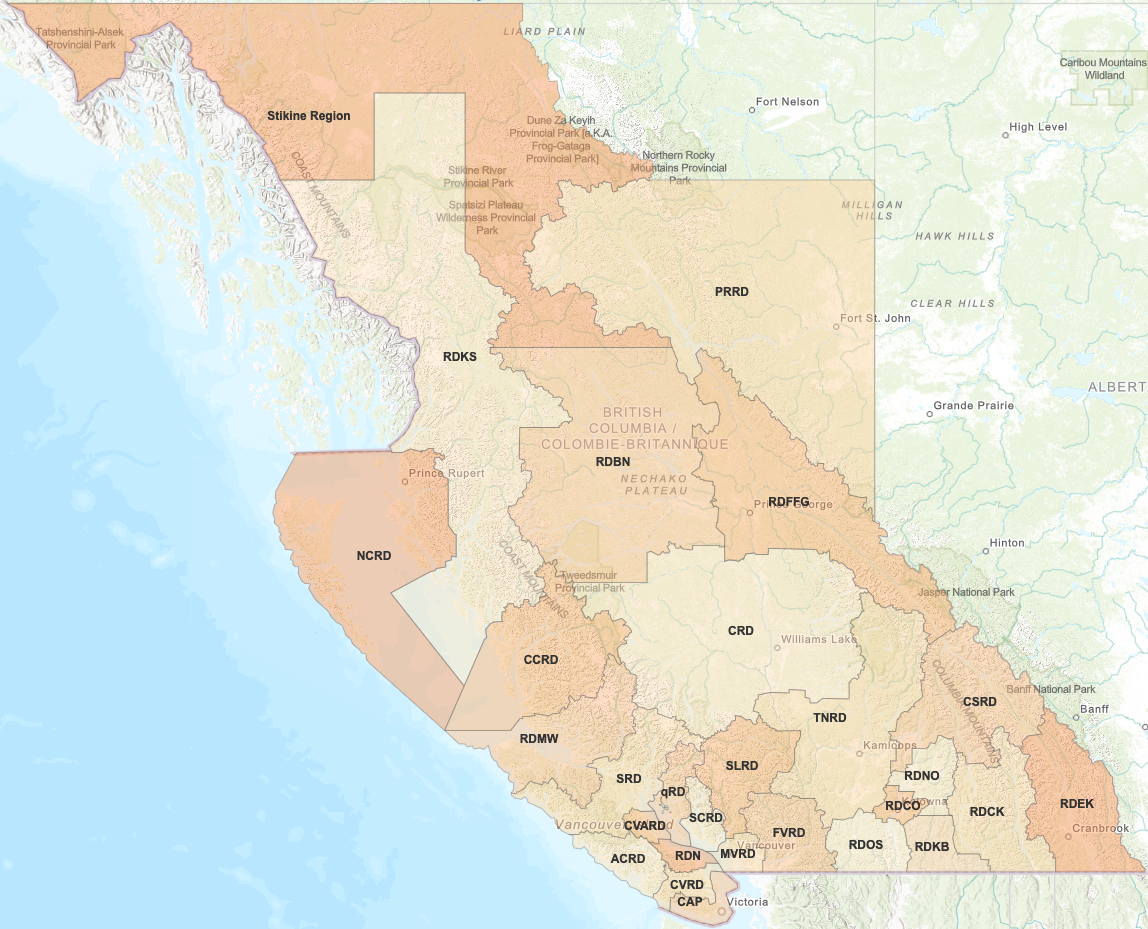Local government incorporation and restructure
As communities change, residents may believe a change in local government structure and/or service delivery could better serve the needs of the community. Re-organizing local government occurs through a restructure process, which examines the impacts for the most appropriate governance/service delivery options. Changes are approved by Cabinet.
Impacts of restructure
The geography of every local government is defined in the letters patent for that municipality or regional district. Letters patent are approved by Cabinet, restructuring of local government can only occur with Cabinet approval.
Restructure can involve significant change to the geography of, or services provided by, a local government. Local government restructure also includes the incorporation of a new local government to represent and provide services to residents of an area.
Restructuring local government can lead to fundamental changes in representation, taxation and service provision. It can also directly affect the B.C. government, for matters such as transportation and economic development. As well, local government restructure can affect others such as First Nations and businesses within a community. Before requesting restructure, local governments are expected to ensure that residents and other stakeholders understand the impacts.
Municipal restructure
Municipalities provide general governance, services, regulation and property taxation within their established boundaries (and sometimes provide services outside their boundaries).
Municipal restructure usually includes:
- Incorporation of new municipalities,
- Adding significant, non-municipal areas (for example, rural areas) to the municipal boundary, or
- Amalgamation of two or more municipalities.
Municipal restructure can also include a change in municipal classification (for example, changing from a town to a city) or a change in municipality's corporate name.
Regional district restructure
Regional districts are generally comprised of municipalities, electoral areas (non-municipal or rural areas) and Treaty First Nations (if applicable). Regional districts have flexibility in how they to provide services to various participants within their boundaries.
In addition to being impacted by municipal boundary changes and restructures, the regional district structure can also be reconfigured in these ways:
- A significant change in electoral area boundaries,
- A change in regional district boundaries, or
- Replacement of one or more regional districts with a new local government.
Regional district restructuring that does not affect geography can include a change in the allocation of votes per unit of population for the directors, also known as "voting unit", or the regional district corporate name.
Improvement district boundary changes and dissolutions
Improvement districts provide a limited number of specified services to properties within their boundaries. An improvement district’s services are specified as “objects” in the letters patent approved by Cabinet for that improvement district. The B.C. government’s longstanding policy is to reduce the number of improvement districts and have those services instead provided by local governments (for example, municipalities or regional districts).
Improvement district restructure can include:
- Dissolution or conversion of improvement district services to a regional district or municipality,
- Adding properties to the improvement district (service) boundary, or
- Changing the scope of an improvement district's service authority
Related Links
Guidance and Resources
Contact information
Contact us if you have questions about local government incorporation and restructure.
250 387-4020
1 800 663-7867

